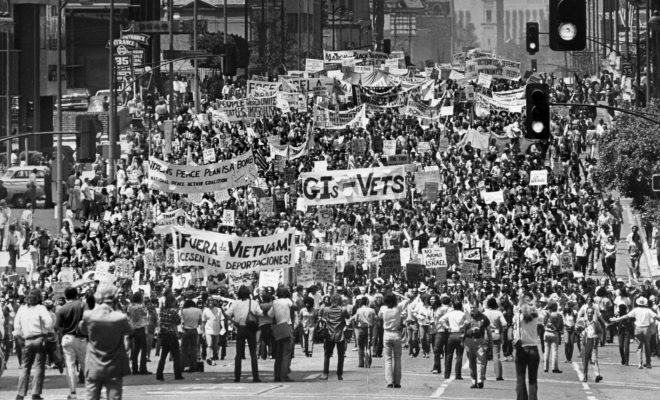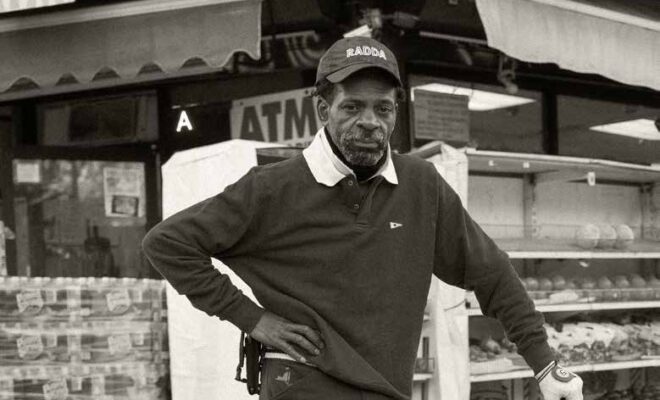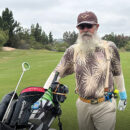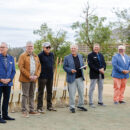Out of COVID’s Frying Pan And Into Drought’s Fire

OH, NO, HERE WE GO AGAIN
Whether the American Southwest is on the cusp of another drought or in the middle of a much longer megadrought is a conclusion best left to posterity, usually made by academics able to luxuriate in all things long run. For California’s golf community, it’s a distinction without much difference. For all intents and purposes, California is now the land of permanent drought.
Here are the facts as we sit between precipitation seasons waiting to see if Mother Nature gives the southern part of the state the reprieve it requires next rainy season to avoid what is already unfolding in the northern half of California, where water cutbacks of 40 percent and more have already been applied to golf properties.
▪ After a below-average year in 2019, California did even worse in 2020, receiving only 60 percent of the rain and snow that falls in a normal year. 2021 is not entirely spoken for yet — the precipitation year doesn’t formally end until September 30 — but it is shaping up to be even drier. As of mid-May, precipitation levels were tracking at 48 percent of average for the year in the Northern Sierra region, 49 percent in the mid-Sierra/San Joaquin region, and 36 percent farther south in the Tulare Basin region, with scant chance for additional precipitation until fall. As for points south of the Tulare Basin, substitute near zero for “scant chance.” Rain and snow just don’t fall in Southern California past mid-May. Bottom line: 2020-2021 represents the third driest year on record, and the two driest were in the recently concluded 2012-2016 drought, or as future academics may later inform us, during the previous spike in the ongoing megadrought.
▪ Current snowpack levels are roughly nine percent of normal for this time of year in the Northern and Central regions of the Sierra Nevada, and four percent of normal in the Southern Sierra. Worse, because those levels are higher than the bone-dry year of 2014-2015, a snow melt runoff that was anticipated to be much higher than 2014-2015 hasn’t occurred, its disappearance due to capture by soil still bone dry from the last drought, as well as a higher evaporation factor caused by unusually high spring temperatures, the highest on record.
▪ As of June 1, all of the major reservoirs across the state contained less water than historical levels on that date, with the two largest reservoirs, Shasta and Oroville, at 56 percent and 50 percent of average levels, respectively. Long overdrawn and over-allocated, the Colorado Basin, despite some welcome late-spring snowfalls, is also in the throes of what those same academics have taken to call a megadrought. Given that both are the main sources of the imported supplies upon which Southern California depends for its full needs, it’s easy to understand the industry’s alarm. Yes, the Metropolitan Water District informs us that those supplies, in conjunction with substantial conservation successes, will keep Southern California secure for the next year, but another year like the last two and all bets are off.
It’s also easy to understand why on April 21 Governor Newsom declared a regional drought emergency in Mendocino and Sonoma Counties, directed state agencies to take actions to prepare for worsening conditions statewide, and quickly followed that up on May 10 by expanding the emergency to apply to an additional 39 counties and directing the State Water Regional Control Board to consider modifying requirements for reservoir releases and water diversions.
The good news in those gubernatorial actions involves something SCGA suggested in its reporting about the state’s COVID response, namely that Governor Newsom seems to prefer regional models of response over the one-size-fits-all approach that his predecessor preferred. Whether it’s his actual preference — and the result of intense lobbying by Southern California water jurisdictions — or the residue of lessons learned from the 2012-2016 experience is hard to know, but it’s welcome nonetheless, nowhere more so than the Coachella Valley, which suffered mightily from the one-size-fits-all approach in 2014-2016.
As golf facilities and golfers pivot from advocating for the game’s almost unique compatibility with life in a pandemic to the game’s compatibility with life in a drought, here are a few key facts to keep front and center.
▪ Golf courses represent 3.5 percent of the turfgrass in California and use only 0.73 percent of the potable water consumed in the state. As opposed to a national average of only 12 percent, more than 33 percent of California’s golf courses use recycled water, and all but one of the 121 golf courses in the Coachella Valley use something other than potable water to irrigate their courses.
▪ The industry is practically unique among the state’s outdoor irrigators in its use of sophisticated moisture-sensing computer technology to ensure that the absolute minimum required for turf viability is applied. And when these minima are applied to courses where significant turf has been removed in favor of California-friendly, drought-tolerant ground cover, the water savings are geometrically enhanced.
Some detail about this “sophisticated moisture-sensing computer technology” is helpful to anyone who’s trying to tell the game’s complete and accurate story. Mobile sensing technology collects information on soil moisture, turf vigor, salinity, compaction and elevation, then generates GIS-accurate maps that aid in overall irrigation-system design and management. Upon installation, these systems provide essentially real-time data (it’s updated every five minutes) and allow superintendents to control individual sprinkler heads from a smartphone. These central control systems feature a complete diagnostic component that alerts staff members to stations, holes or areas that are not functioning properly. Hardly the unsophisticated backyard irrigation system that many outside the golf industry often believe it to be.
Golf has gone to great lengths to reduce its water footprint over the last 20 years, and it shouldn’t be shy about sharing that record, not just with policymakers but with all who will listen. The facts of any matter are important, but so are the perceptions of any matter. And perceptions are almost always more controlling.











